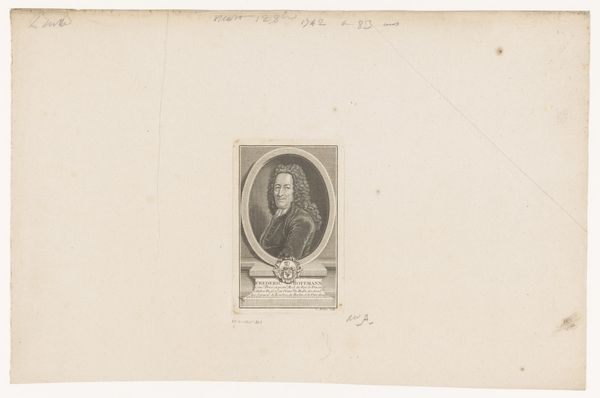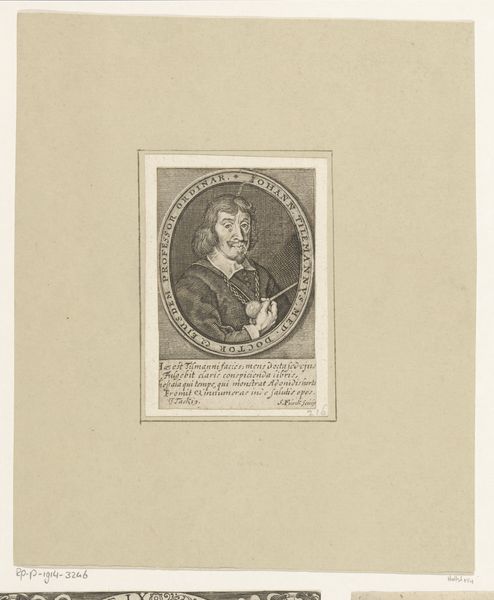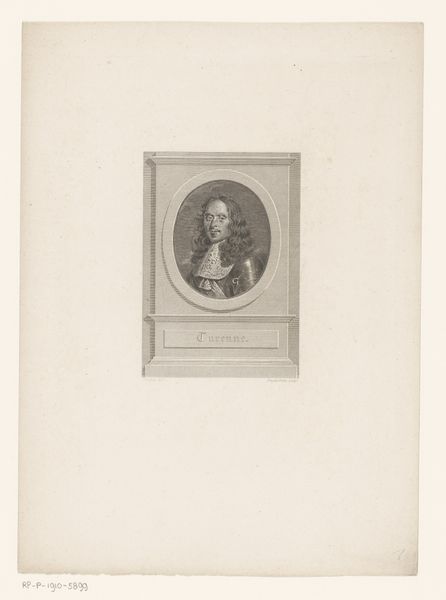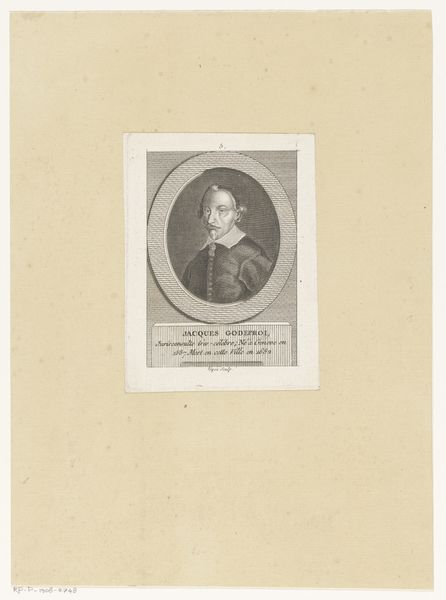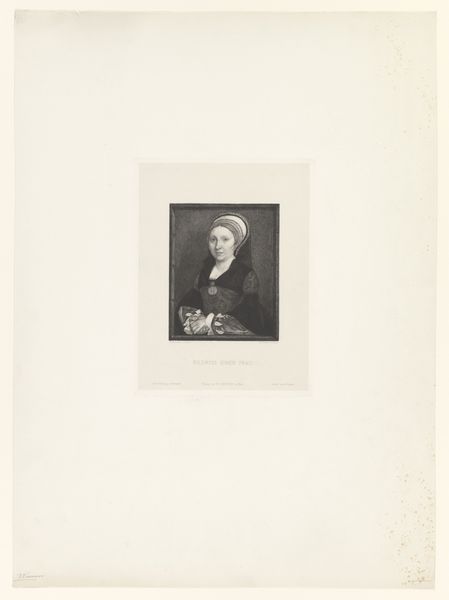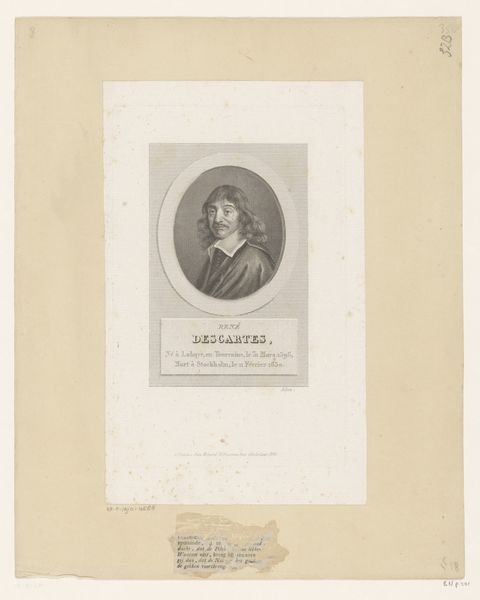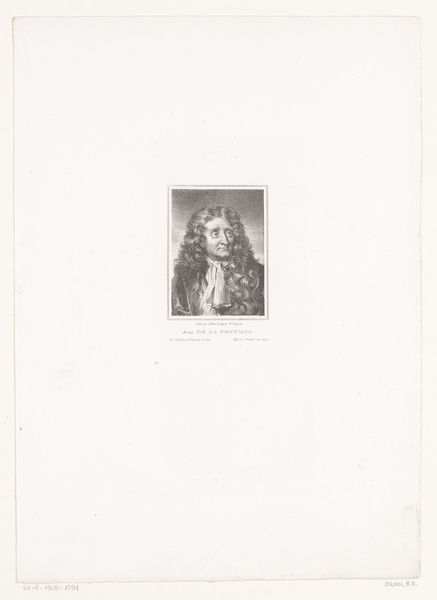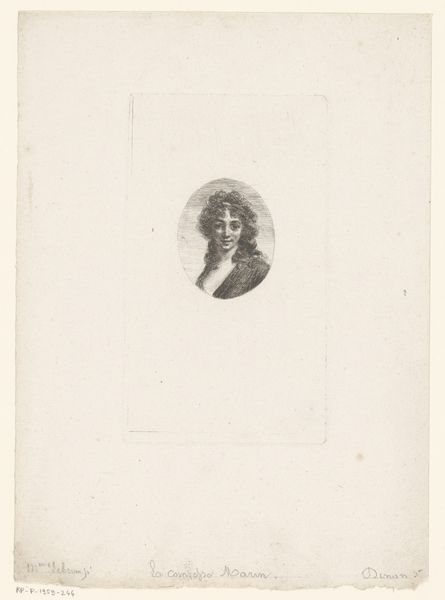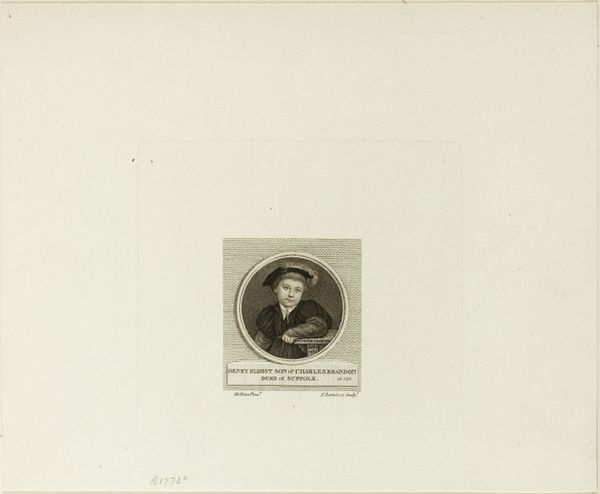
engraving
#
portrait
#
old engraving style
#
genre-painting
#
engraving
Dimensions: height 89 mm, width 57 mm
Copyright: Rijks Museum: Open Domain
Curator: This is an engraving titled "Portret van Henri de Latour d'Auvergne, vicomte de Turenne," dating from 1762 to 1833, created by Meno Haas. Editor: It strikes me as rather severe. The subject, enclosed in that oval frame, looks quite formal, almost constrained, doesn't he? Curator: Indeed. It’s critical to recognize that portraits such as this one served as powerful status symbols during this period. It represents a very specific kind of masculine identity—that of the military leader and aristocrat. This work must be understood as reflecting the social hierarchy of the time. Consider how this kind of image construction, by a Dutch artist, contributes to the enduring narratives about powerful figures in Europe. Editor: The iconography is powerful, isn't it? His armour evokes courage and status, the curled wig and lace add touches of aristocratic flair. It all feels very staged. Each detail seems purposefully placed to communicate a certain ideal. Curator: Absolutely, but we must also consider the ways this image actively constructs an identity that transcends time. Turenne, a celebrated military figure, is presented here not merely as an individual, but as a timeless representation of leadership and authority. It becomes a visual signifier. The engraving suggests the vicomte's authority in subtle but potent ways. The slight upward tilt of his head and steady gaze. Editor: Looking closely at the detail achieved through the engraving, it really does lend an almost tangible presence, doesn't it? Although it's a flat image, I almost feel as though he's in the room with me. A symbolic manifestation of power in monochrome. Curator: Precisely. When viewed in that light, the power of a single, static image like this portrait resides in its ability to perpetuate archetypes, even across centuries. Its historical existence is as an engraved print from the 18th/19th century, but the image speaks to power structures that run far deeper. Editor: It certainly invites contemplation about the staying power of symbols and how they actively shape our understanding of leadership and cultural values, across eras. Curator: Precisely. That's an important perspective to take away.
Comments
No comments
Be the first to comment and join the conversation on the ultimate creative platform.

